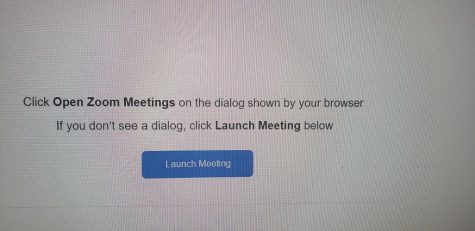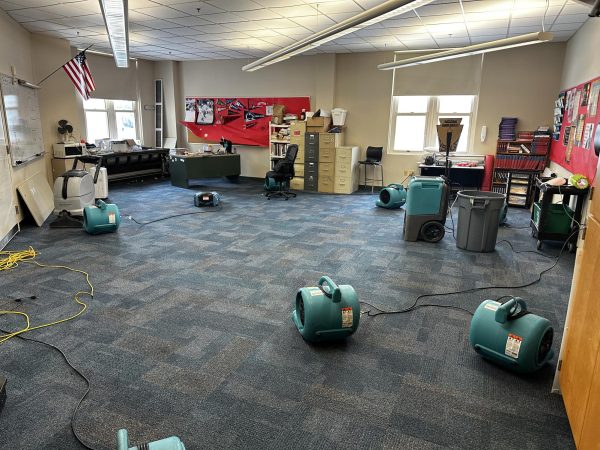Can Remote Learning Be Better?
January 4, 2021

We have all experienced some issues with remote learning. However difficult it is, we have to be remote for the safety of students, teachers, and their families, but we could be doing a better job of facilitating learning online.
Right now, Ipswich is using a synchronous system. This means that students in classrooms and students attending class remotely cover the same material at the same time. This system is undoubtedly closer to school pre-pandemic, but it still has flaws. With Ipswich’s alphabetical cohort system, each class period has about half of the students in the building and half joining through zoom. Theoretically, everyone should get easy access to the teacher for a more “real” feeling class experience, yet teachers and students often stumble over the clunkiness of this divided class. Aside from technical issues, which are not uncommon considering the number of video calls going on at once around the building, online students are fighting an uphill battle to stay focused and engaged in class.
From the teacher’s perspective, synchronous classes can be equally challenging. Mrs. Barclay had this to say when asked about the challenges of online learning: “I enjoy seeing half the class in front of me, but my attention is split with the students on the screen. In the beginning of the semester, I would forget about the students on Zoom. Other times, I would neglect the students in front of me. Achieving a balance with my focus has been a goal of mine.” Teachers can be strained by their virtual class members, and many teachers who have struggled with technology in previous years have it much worse this year.
However, the synchronous system has its advantages. Barclay finished our interview by saying, “Ipswich school district prides itself on its high bar for academic learning. While easier, the asynchronous model would only cover about half of the curriculum for any given class. Educators at Ipswich want to do better than that, regardless of the unique situation. We are living through the pandemic. I am proud to work with such a strong academic faculty that puts the student welfare before a more convenient approach.” In terms of curriculum, the synchronous model allows for more breadth, but it is not the only way to conduct online learning.
An asynchronous model is just another way to do online learning. Rather than having people zoom in simultaneously as in-person class takes place, teachers would assign work, and students would complete the work within a given time frame. This system was prevalent for online classes pre-pandemic. I have taken two online courses; one through Canvas via Salem State and another through VHS, and both used an asynchronous model with work assigned each week. While some assignments like the discussion posts were due earlier in the week, most of the work had to be done by the end of the week. One of the benefits of the asynchronous model is that it is much more flexible for each student individually. Even though the class still moves at the same pace overall, students get to choose when to complete their work.
However, the asynchronous model is not perfect. The main problem with giving up synchronous zooms is that it makes the class feel less personal. IHS student Will Baise admits that “it is difficult with never meeting with the teacher or class” for VHS. There are ways to alleviate this problem. One way is to incorporate discussion posts into the asynchronous workload each week. They are a superb way to facilitate interaction between peers; they allow students to be more articulate in sharing their thoughts.
Another fear is that without supervision, students would neglect their work. Baise explains, “I believe the top 15% of students would be able to handle it, but for the rest, I believe that almost all students need some teacher in front of them that can give them oral instruction and answer direct questions.” The silver lining here is that because of the cohort system, the majority of students are already physically in class for at least two days per week. Even if we incorporate an asynchronous model for the two remote days, this portion of class doesn’t have to change. During the in-person days, teachers could check in with students and answer questions.
It’s hard to say whether a switch would benefit all students. Despite this, the concept of asynchronous learning should be incorporated more into our online learning because it could help ease the stress of a crazy year. The beauty of the real world is that it doesn’t have to be 100% either way. We can apply both systems in a way that maximizes learning for everyone.





